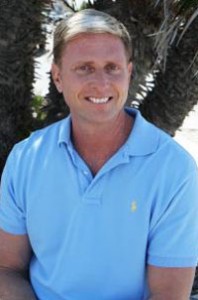National LGBT youth suicide prevention task force and grants announced

Charles Robbins
The federally supported National Action Alliance for Suicide Prevention (NAASP) on December 30 officially announced a task force dedicated to suicide prevention among LGBT youth.
Pamela Hyde, the openly gay head of the Substance Abuse and Mental Health Services Administration (SAMHSA) revealed plans in November to form such a task force. And, on the same day as the Alliance officially announced the task force, SAMHSA separately announced the availability of up to $5.5 million for campus suicide prevention programs that meet the needs of youth the Alliance has identified as being at particular risk, including LGBT youth.
Lesbian, gay, and bisexual youth are from 1.5 to seven times more likely to report having attempted suicide than their non-LGBT peers, according to the Alliance. Transgender youth, although less well studied, are believed to have higher rates of suicidal behavior as well.
The task force will be led by Charles Robbins, head of The Trevor Project, which operates an LGBT youth suicide prevention program nationwide, and Kevin Jennings, the Department of Education’s Assistant Deputy Secretary for the Office of Safe and Drug-Free Schools. Jennings, an openly gay appointee, founded the Gay, Lesbian, and Straight Education Network (GLSEN).
The Alliance, launched by Secretary of Health Kathleen Sebelius and Secretary of Defense Robert Gates in September, is a public-private partnership supported by SAMHSA, part of the U.S. Department of Health and Human Services. It is designed to advance and update the 2001 National Strategy for Suicide Prevention.
Robbins said in an interview that he believes the task force will be able to inform government agencies as well as private non-profits about “appropriate, evidence-based suicide prevention programming that works for this community.”
He noted that many different government agencies—including the Department of Education, the Department of Health and Human Services, and the Department of Defense—are involved in suicide prevention, and the task force will be able to “provide some linkages” among the efforts.
He also hopes the task force will be able to share with and learn from the other Alliance task forces addressing high-risk populations, including American Indians/Alaska Natives and military service members and veterans.
He said he and Jennings are still in the process of naming members to the task force and would be convening in January to identify specific goals for the group.
A string of suicides by teens bullied for being gay or perceived to be gay captured nationwide media attention last fall and prompted calls for action from LGBT organizations, celebrities, and the U.S. Department of Education, among others. Robbins said, however, that these incidents “are a fraction of what occurs on a regular basis.”
In fact, the federal government has known about suicide as a health risk for gay and lesbian youth for over 20 years. The Report of the Secretary’s Task Force on Youth Suicide, published by the Department of Health and Human Services (HHS) in 1989, noted the higher risk of suicides and suicide attempts among that population.
Some questioned the report’s methodology, but subsequent studies have upheld the general conclusion that gay and lesbian youth are a group at high risk for suicide. But pressure from the right wing led the administration of George H.W. Bush to suppress the information in that report, according to a 1994 piece by Chris Bull in the Advocate.
In December 1994, under President Clinton, the federal government held its first conference on the primary care needs of lesbian and gay youth. One of the outcomes was a 1997 book by the event coordinators, Dr. Caitlin Ryan, Director of the Family Acceptance Project at San Francisco State University, and Dr. Donna Futterman, director of the Adolescent AIDS Program at Albert Einstein College of Medicine. The book included a section on higher suicide risk among gay and lesbian youth.
And the 2001 National Strategy for Suicide Prevention, published under Surgeon General David Satcher just as President George W. Bush took over from President Clinton, also noted studies with the same conclusions. It recommended that “prevention programs for sexual minority populations” should consider “issues of stigma, labeling, privacy, and appropriateness of referrals” so they are “safe and effective.”
In 2008, the Suicide Resource Prevention Center, created by HHS to help states and communities “implement and evaluate suicide prevention programs,” released a 63-page white paper, Suicide Risk and Prevention for Lesbian, Gay, Bisexual, and Transgender Youth.
The paper said lesbian, gay, and bisexual youth often lack “important protective factors such as family support and safe schools.”
“It would be difficult to overstate the impact of stigma and discrimination against LGBT individuals in the United States,” said the white paper. “Stigma and discrimination are directly tied to risk factors for suicide.”
Robbins said that work among government entities on suicide prevention among LGBT youth “has been happening over a significant period of time.” He has been a member of the Consumer Subcommittee of SAMHSA’s National Suicide Prevention Lifeline for three years, and said that SAMHSA has been “deeply committed” to addressing LGBT youth suicide prevention.
In government, however, “it takes a long time for things to happen,” he said.
The task force was conceived before the media attention around the LGBT suicides last fall, he noted. The attention last fall, however, “helped align the government with ways they can address the problem,” and reaffirmed that “this is a public health issue.”


Leave a Reply